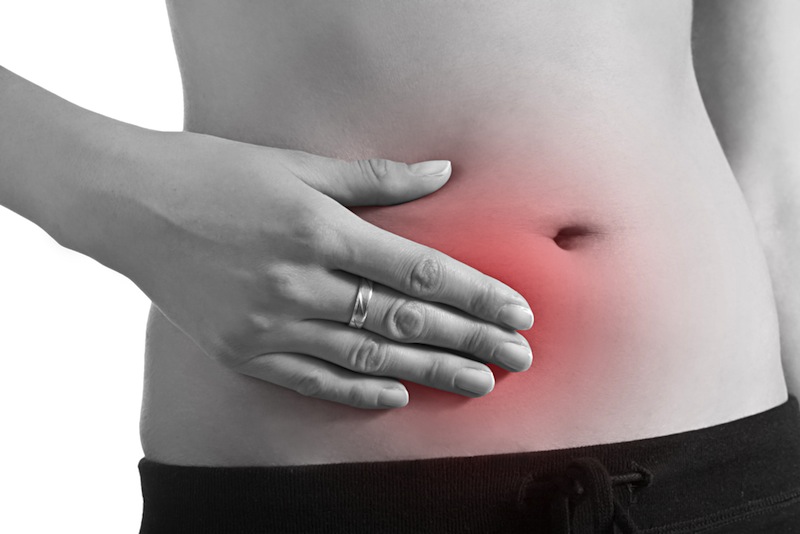Why Menstruation Remains a Medical Mystery

It's still a bit of a mystery why women menstruate. Humans are among the few species in which the process occurs, and although researchers have ideas about why menstruation happens, there are many unknowns.
But a better understanding of the hows and whys of menstruation is needed, researchers say. This is especially true because menstrual problems, which affect 20 to 30 percent of women, can rob women of their ability to go about their normal lives for a week out of every month.
"There's so much we don't understand about why this repeated event of shedding and repair happens," said Dr. Hilary Critchley, an ob-gyn and reproductive health researcher at the University of Edinburgh in Scotland. "It's so crucial for the reproduction of our species. But it's not a popular topic to study. There's a big to-do around talking about problems that people don't see."
In a paper to be published in an upcoming issue of the journal Human Reproduction Update, Critchley and a colleague at the university, researcher Jacqueline Maybin, combed the scientific literature published over the last 40 years on all aspects of menstruation, medically defined as the loss of the endometrium, or the tissue that lines the inside of the uterus. [Wonder Woman: 10 Interesting Facts About the Female Body]
Their conclusion? There's a lot that researchers still don't know about menstruation and how it affects women's health.
For example, some women who have heavy bleeding during menstruation also have certain conditions, such as uterine fibroids (which are noncancerous growths in the uterus) or endometriosis (a condition in which bits of endometrium appear outside of the uterus). But some women with heavy bleeding seem to have no other related problems.
Researchers aren't sure whether the cause of heavy bleeding lies in the lining of the uterus itself or in the mechanisms that normally control the bleeding. Moreover, researchers don't know whether the cause of heavy bleeding is the same in women with fibroids as in those with endometriosis, or in women without either condition.
Sign up for the Live Science daily newsletter now
Get the world’s most fascinating discoveries delivered straight to your inbox.

But finding the answers would help millions of women; heavy bleeding can be a major disruption in a woman's life, Critchley said. Normally, women lose about 1.2 ounces (35 milliliters) of blood monthly, she said. When blood loss approaches 2 ounces (60 ml), women are at risk for anemia. Women with blood loss of 2.7 ounces (80 ml) or more are diagnosed with the clinical condition called heavy menstrual bleeding, or HMB, she said.
However, some women lose 13.5 ounces (400 ml) of blood every month. For comparison, when people give blood to a blood bank, they donate about 17 ounces (500 ml), and donations are allowed only every eight weeks.
"These women with heavy menstrual bleeding are just debilitated. They are miserable. They can't go out of the house," Critchley said. "This dominates their social lives, their holidays, their weekends."
Researchers do know that a fall in levels of the hormone progesterone sets off menstruation. When a woman ovulates, but then does not become pregnant, falling progesterone levels trigger an inflammation response in the endometrium, and this inflammation response is not well understood, Critchley said. It is this inflammation that causes the breakdown and shedding of the endometrium. (The fluid that leaves a woman's body may look like blood, but is actually a mix of fluid, red blood cells, immune system cells, the cells that line the uterus and cell fragments.)
One thing that is clear is that this inflammation response is complicated. "There are lots of different pathways involved, but what is so clever is the way they are all coordinated," Critchley said. There are specialized chemical signals that bring in white blood cells, and there are many enzymes that switch on and begin the breakdown of the tissue.
Studying the endometrium's inflammation, which is normally very tightly controlled, could help researchers better understand not only what goes wrong in women who have heavy menstrual bleeding, but also what goes wrong with errant inflammation that happens elsewhere in the body, Critchley said. For example gout, lupus and rheumatoid arthritis all involve excess inflammation.
Interestingly, in species that don't menstruate, the fall in progesterone levels doesn't set off this same response. Instead, the hormone drop leads to the remodeling and re-absorption of the endometrium, meaning, the uterine lining is deconstructed, but not shed from the body. Why this difference exists between humans and other species isn't clear, the researchers wrote in their report.
More research on menstruation could also benefit women who have fertility problems, Critchley said. "We separate too much, the pregnant and the nonpregnant uterus," she said. "The functioning and the state of the nonpregnant uterus may be far more important for problems with pregnancy" than people have realized so far, she said.
And it is not only the shedding of the uterine lining that is important, but also the rebuilding of the lining that happens during the early part of the next menstrual cycle. Researchers are also unsure about exactly how this happens. It may be that the cells are brought in, from the circulation, or that cells already in the uterine wall divide and differentiate, giving rise to the new lining.

On a wall in her office, Critchley said, she has a photo of the inside a uterus during menstruation. "It looks just like if you fall down on a gravel path, and graze your knee. It's a wound," she said.
"But it's phenomenal — 10 days later, it’s a lovely, smooth, velvety surface that is getting ready for an embryo," she said.
It's remarkable that the endometrium doesn't scar, even after many cycles of shedding and repair, she said. And this lack of scarring may also hold clues to treating other conditions, she said. For example, the liver has to repair itself without scarring after certain types of damage, and when it loses the ability to do so, liver problems develop. Similarly, infections or other types of damage to the lungs can lead to scarring. Understanding how the uterus heals itself without scarring could help treat scarring in other organs, Critchley said.
Menstrual problems are a relatively modern disorder, she noted. In human ancestors, it was normal to have 40 periods during a lifetime. Today, women may have 400. [Best Period-Tracking Apps]
Critchely's own research is focused on studying the response of uterine cells to the monthly drop in progesterone. She and her colleagues are looking to see whether other chemical signals are also needed to trigger menstruation, and are studying the processes that constrict the blood vessels and change the blood flow to the endometrium, she said.
And the researchers really want to study some potential drug treatments that are aimed at reducing heavy bleeding, hoping to find how they affect local inflammation in the womb and shedding, she said.
In some cases, women who have suffered from heavy bleeding for many years seek surgery to remove the uterus, she said. Some are young and haven't had children. "Women are completely incapacitated by these problems," she said. These women don't really want surgery, but other treatments may not always work, or may cause side effects. "We don't have sufficient choice of medical treatments" to offer them instead, she said.
Follow Live Science @livescience, Facebook & Google+. Originally published on Live Science.










